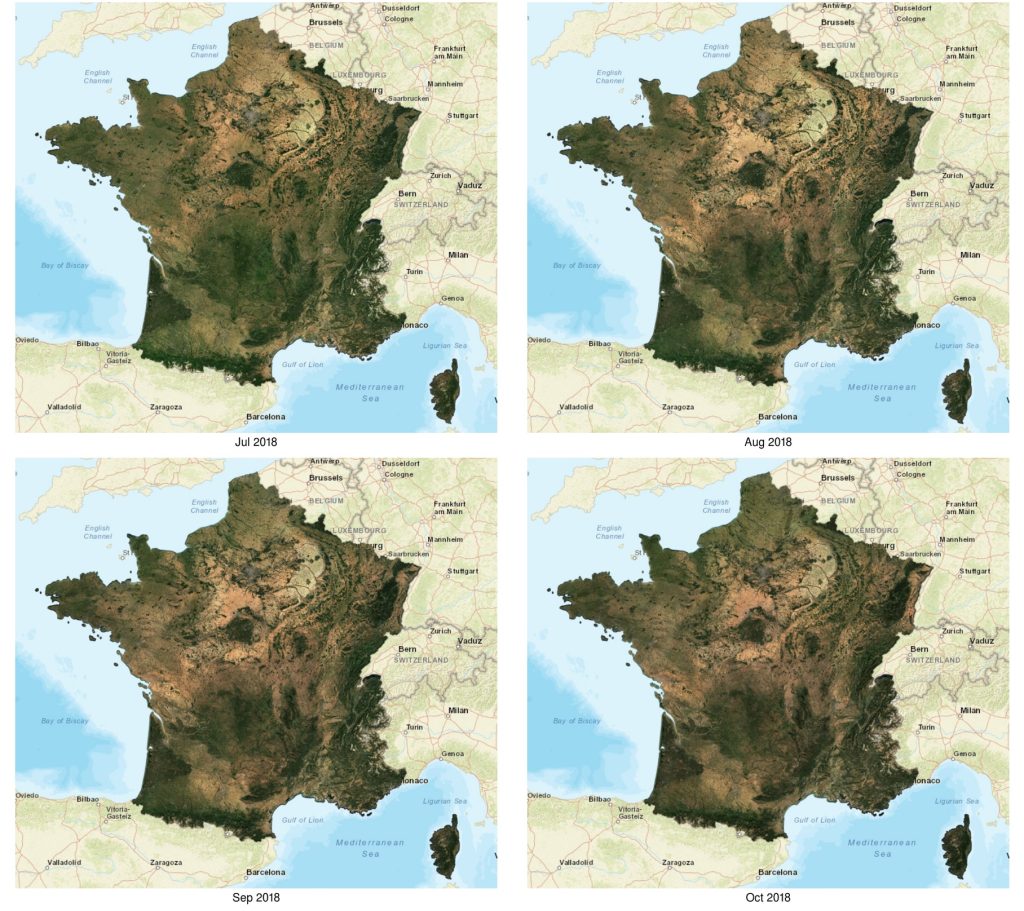The Weighted Average Synthesis Processor (WASP) is designed to provide monthly syntheses of Sentinel-2 surface reflectance products over land (so-called Level 3A products). WASP uses as input Sentinel-2 Level 2A products produced by the MAJA processor.
The high quality of the cloud and shadow masks of these Level 2A products allows confidence in the cloud mask. As a result, the WASP synthesis method can use a weighted average of cloud-free and shadow-free pixels collected during a synthesis period of 1.5 months, while most Level 3A processors are based on Best Available Pixel methods, which select only one date for each pixel that is most likely to be cloud-free. Thanks to the weighted average method, Level 3A products generated with WASP have a very low level of artefacts compared to classical methods.
The methods used in WASP were defined by CESBIO in 2008 for the Venµs satellite and then implemented in the Sentinel-2 for Agriculture (Sen2Agri) project. The processor developed by the Sen2Agri consortium was later integrated into the Theia ground segment by CNES, and is regularly updated and improved.
As for L2A, the syntheses are delivered in tiles. A bit of processing is necessary to generate mosaics, which are available here for the zones processed by Theia.

Get the latest version of WASP
WASP is distributed as an Open Source software under GPL licence.
Get the code from the git repository
Data availability :
WASP is used operationally by THEIA, Sentinel-2 L3A products are available for download on the THEIA portal.
Mosaics over the West of Europe, Maghreb, Sahel and Madagascar are generated by THEIA with less than 1 month delay, They can be viewed and compared here.
Format :
The format is described here.
Documentation :
Olivier Hagolle, David Morin, & Mohamed Kadiri. (2018). ATBE: Detailed Processing Model for the Weighted Average Synthesis Processor (WASP) for Sentinel-2 (1.4). Zenodo. DOI:10.5281/zenodo.1401360
